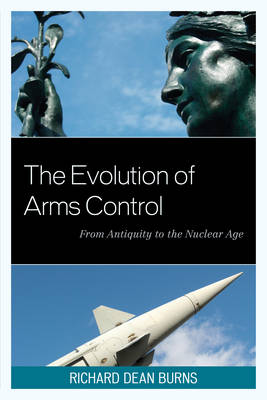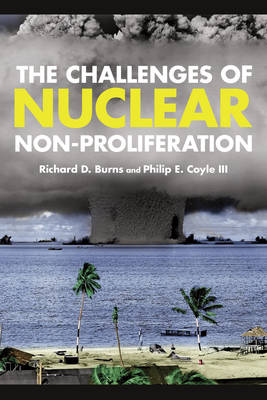Weapons of Mass Destruction
2 total works
Drawing on his knowledge of the comparative history of warfare and arms control across preliterate, ancient, medieval, and modern polities, Richard Dean Burns focuses longitudinally on such perennial arms control issues as negotiation, verification, and compliance. Although he does not, for example, allege that war elephants and nuclear weapons are of equal destructive potential, he does discern instructive similarities between Carthage in 202 BCE and Iraq in 1991 AD.
Arms control and disarmament measures have been pursued and adopted throughout the history and prehistory of human warfare: sometimes as protocols recognizing evolving humanitarian taboos; sometimes as terms imposed by the victors on the vanquished; and sometimes as accords negotiated between rivals fearful of mutual destruction. Arms control measures ramped up in significance and urgency at the dawn of the 20th century by the introduction of rapid-fire weapons, aircraft, chemical agents, and submarines, and again at mid-century with the advent of weapons of mass destruction-nuclear, chemical, and bacteriological-with sophisticated delivery systems. As Burns makes clear, the enormous increase in destructive potential brought about by thermonuclear weaponry essentially changed the nature of war and, therefore, of arms control.
Arms control and disarmament measures have been pursued and adopted throughout the history and prehistory of human warfare: sometimes as protocols recognizing evolving humanitarian taboos; sometimes as terms imposed by the victors on the vanquished; and sometimes as accords negotiated between rivals fearful of mutual destruction. Arms control measures ramped up in significance and urgency at the dawn of the 20th century by the introduction of rapid-fire weapons, aircraft, chemical agents, and submarines, and again at mid-century with the advent of weapons of mass destruction-nuclear, chemical, and bacteriological-with sophisticated delivery systems. As Burns makes clear, the enormous increase in destructive potential brought about by thermonuclear weaponry essentially changed the nature of war and, therefore, of arms control.
The Challenges of Nuclear Non-Proliferation
by Richard Dean Burns and Hon Philip E III Coyle
Published 12 March 2015
The Challenges of Nuclear Non-Proliferation is an exhaustive survey of the many aspects of non-proliferation efforts. It explains why some nations pursued nuclear programs while others abandoned them, as well as the challenges, strengths, and weaknesses of non-proliferation efforts. It addresses key issues such as concerns over rogue states and stateless rogues, delivery systems made possible by technology, and the connection between nuclear weapons and ballistic missiles, examining whether non-proliferation regimes can deal with these threats or whether economic or military sanctions need to be developed. It also examines the feasibility of eliminating or greatly reducing the number of nuclear weapons. A broad survey of one of today's great threats to international security, this text provides undergraduates students with the tools needed to evaluate current events and global threats.

